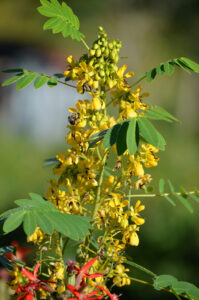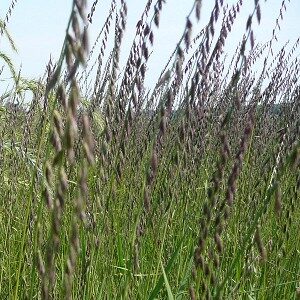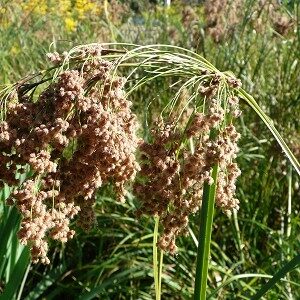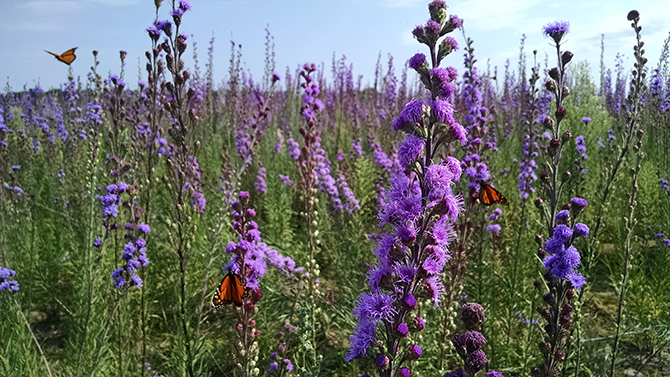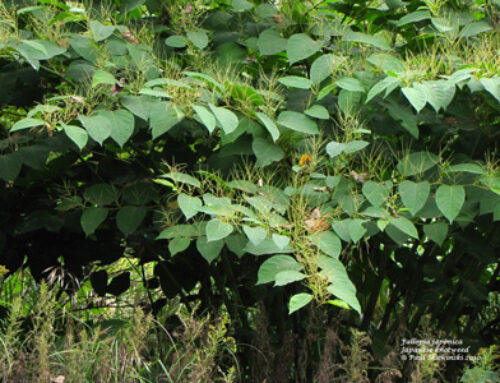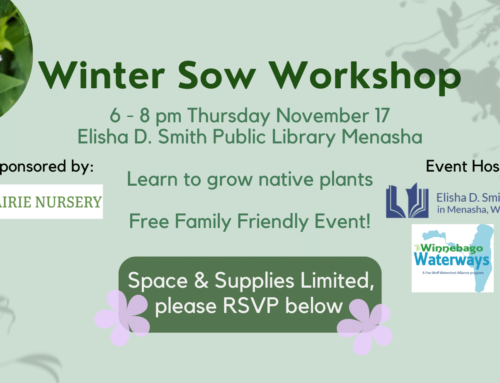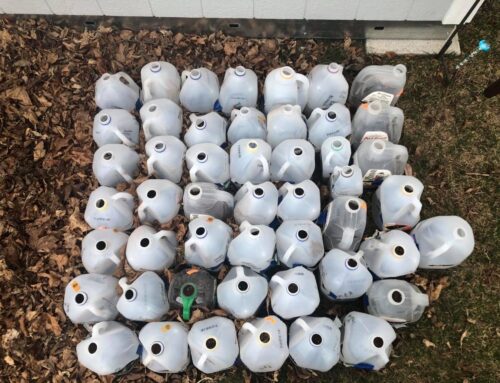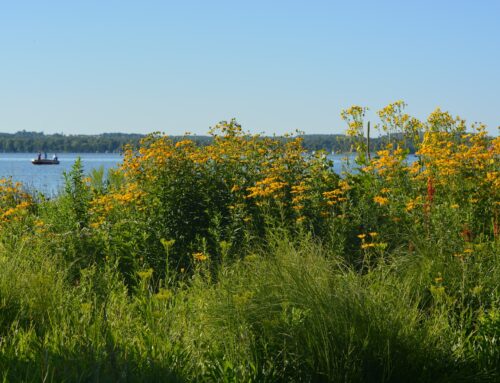One of the things we’ve heard over the last two years is that once native plant projects are installed, that it can be hard to continue to identify the plants present. In April, we starting creating lists of flowers that could be blooming in your native plant project. This list can also be used to help you plan your next native plant project. We have the ability to have plants blooming in our gardens from April to October, so why not make it happen?
Sun definitions
Full sun: gets at least 6 hours of direct sunlight
Partial sun: gets three to six hours of sun exposure
Shade: less than three hours of sun exposure
Soil definitions
Wet: Saturated year round
Wet-mesic: Seasonally saturated, tends to dry in summer
Mesic: Medium moisture, well-balanced
Dry-mesic: well-drained
Dry: excessively drained
Purple False Foxglove Agalinis purpurea
As the name states, Purple false foxglove has purple flowers that bloom in August and September. It grows best in wet, wet-mesic, and mesic soils with full to partial sun. Purple false foxglove grows up to 4 feet tall and attracts butterflies and bees.
Pasture Thistle Cirsium discolor
Also known as Prairie Thistle, pasture thistle loves dry-mesic and mesic soils. It attracts birds and deters deer, grows to 6 feet tall, and likes full to partial sun.
Grass-leaved goldenrod Euthamia graminifolia
Grass-leaved goldenrod is a great addition to any garden. It likes all soil types but dry and full to partial sun. Grass-leaved goldenrod only grows to be about 2 feet tall and it deters deer.
Bottle Gentian Gentiana andrewsii
We are quite partial to bottle gentian, with its uniquely shaped blue flowers. Growing to approximately 2 feet tall, it likes full to partial sun and thrives in wet-mesic and mesic soils. Bottle gentian attracts bees and deters deer.
Cream Gentian Gentiana flavida
Cream gentian is a great addition to shade gardens. It likes all soil types aside from wet, grows 3 feet, and likes partial sun and shade. Cream gentian will attract bees and is known to deter deer.

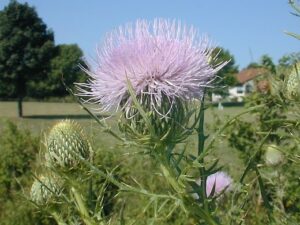


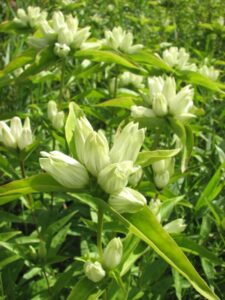

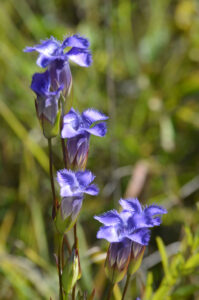
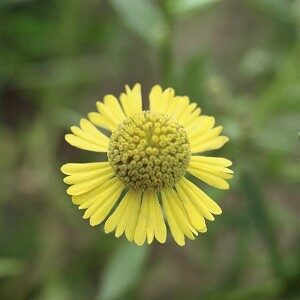

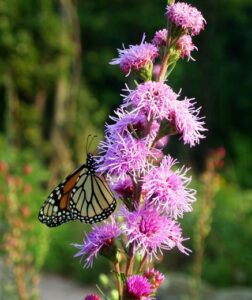
Downy Gentian Gentiana puberulenta
Downy gentian is another pretty blue flower that can be found blooming from August through October. It likes dry, dry-mesic, and mesic soils and full to partial sun. Downy gentian grows to be around 1 foot tall and it attracts bees.
Fringed Gentian Gentianopsis crinita
While not the same species as the other gentian that are found blooming in August, fringed gentian has similsr blue, bottle-shaped flowers similar to the other gentians. Fringed gentian likes wet to wet-mesic soils and full sun. It grows to be about 1 foot tall.
Sneezeweed Helenium autumnale
Sneezeweed has the cutest little yellow flowers! It is great in rain gardens and attracts butterflies, bees, and birds. It prefers wet and wet-mesic soil and full to partial sun. Sneezeweed can grow to be up to four feet tall.
False Boneset Kuhnia eupatorioides
False boneset is a great short stature plant to be added to your native plantings. It blooms in August and September, likes dry-mesic, and dry soils, and full to partial sun. False boneset is also not appealing to deer.
Rough Blazing Star Liatris aspera
Blazing star species are huge butterfly attractants. Rough blazing star likes dry, dry-mesic, and mesic soils and full sun. It varies in height from 1 to 3 feet and attracts birds – including hummingbirds.
Meadow Blazing Star Liatris ligulistylis
Meadow blazing star grows upwards of 5 feet and blooms in August and September. It grows best with full to partial sun in wet-mesic, mesic, and dry-mesic soils. Rabbits and deer do not enjoy eating it while attracting bees, butterflies, and birds, including hummingbirds.
Grass of Parnassas Parnassia palustris
This white flower wetland plants loves full to partial sun and wet to wet-mesic soils. It can be found blooming in August and September and grows to be two feet tall.
Marsh Betony Pedicularis lanceolate
Marsh betony attracts hummingbirds. It likes wet and wet-mesic soils and full to partial sun. Marsh betony has cream colored flowers and grows upwards of three feet tall.
Obedient Plant Physostegia virginiana
Obedient plant is a great option for shoreline restoration projects. It grows best in wet, wet-mesic, and mesic soils and full to partial sun. Obedient plant grows to be about four feet tall and attracts bees, butterflies, and hummingbirds.
Lion’s Foot Prenanthes alba
Lion’s foot is another great shade plant. It grows in wet-mesic, mesic, and dry-mesic soils and partial sun to shade. Lion’s foot attracts bees and grows to be 4 feet tall.



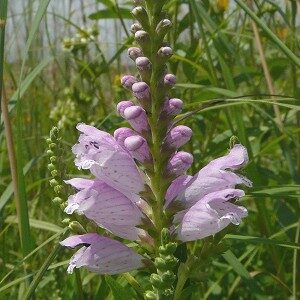


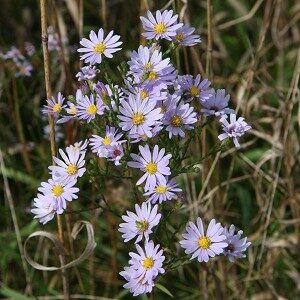

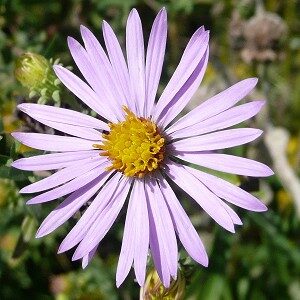

Zig Zag Goldenrod Solidago flexicaulis
Zig zag goldenrod is a versatile plant, doing well in shoreline projects, rain gardens, and regular garden project.s It likes wet-mesic, mesic, and dry-mesic soils. It grows upwards of 3 feet and partial sun to shade. Zig zag goldenrod attracts butterflies and is unappealing to deer.
Sky-blue Aster Symphyotrichum azureus
This plant has light blue flowers that can be found blooming from August to October. It likes dry, dry-mesic, and mesic soils. Sky-blue aster needs full to partial sun and grows to be one to three feet tall. It attracts bees, birds, and butterflies.
Heath Aster Symphyotrichum ericoides
Heath Aster is a great addition to rain gardens. It has white flowers, grows in dry, dry-mesic, and mesic soils and likes full to partial sun. Heath aster grows to be about two feet tall and attracts butterflies and birds.
Smooth Blue Aster Symphyotrichum laevis
Smooth blue aster grows best in wet-mesic, mesic, dry-mesic soils and full to partial sun. It grows to be about 4 feet and attracts birds and butterflies
New England Aster Symphyotrichum novae-angliae
New England aster is a versitle plant that grows in all soil types but dry and lieks full to partial sun. It grows to be 5 feet tall and attracts bees, birds and butterflies. New England grows well in rain gardens and deters deer.
Swamp Aster Symphyotrichum puniceus
Swamp aster has blue flowers and enjoys the shade. It grows best in wet and wet-mesic soil and grows to be 3-5 feet tall. Swamp aster attracts butterflies and is a wonderful addition to your rain garden.
Wild Senna Cassia hebecarpa
This yellow-flowered legume can be found blooming in August and September. It likes wet-mesic and mesic soils and full to partial sun. This 4-6 feet tall plant attracts birds.
Side-oats Grama Bouteloua curtipendula
This grass grows to be about 2 feet. Side-oats gramma likes dry, dry-mesic, and mesic soils. It needs full to partial sun and attracts birds
Wool Grass Scirpus cyperinus
Wool grass has neat brown fruiting bodies. It likes wet and wet-mesic soil, partial to full sun, and grows to be 6 feet tall. It does well in rain gardens and attracts birds.

